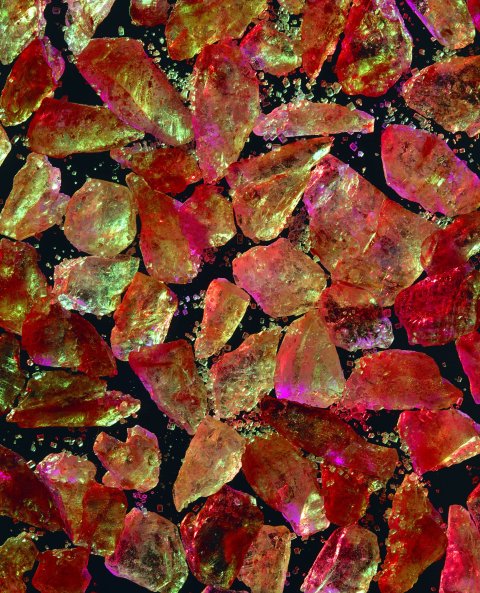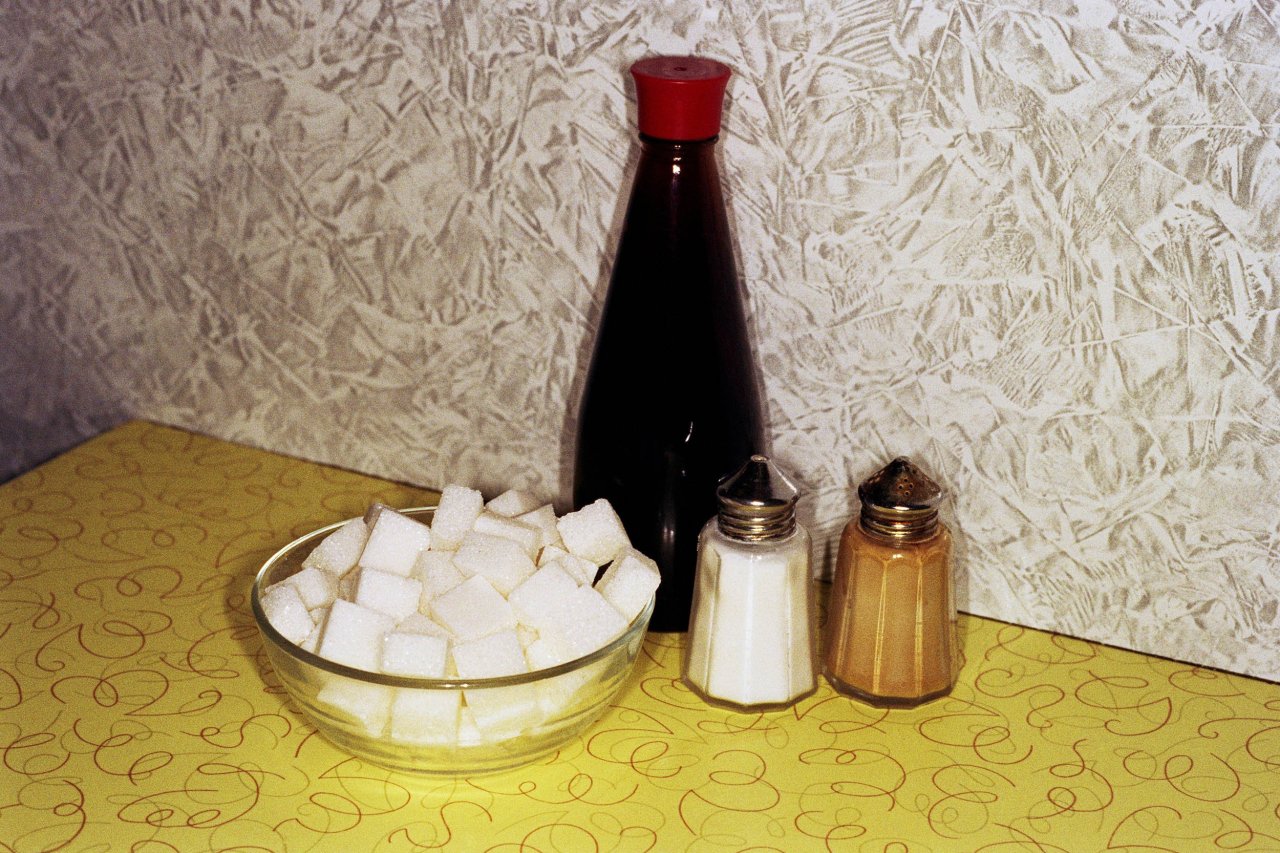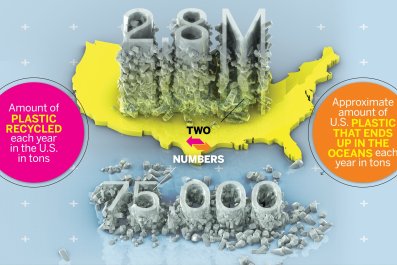Think of all the kinds of sugar: white for cakes, brown for cookies, powdered for frosting, turbinado for single-origin pour-over coffee, simple syrup for brandy old-fashioned cocktails. Despite these different forms and uses, chemically speaking, they're all the same, made of a molecule called sucrose. Sucrose and its even simpler component parts, fructose and glucose, are packed with energy—but also calories. The ubiquity of sugar is a growing problem for global public health, as obesity has reached epidemic levels in some parts of the world.
But there are other sugars with nearly identical yet fundamentally different chemical structures, dozens of them, including some that taste just like table sugar but have almost zero calories. And now a Japanese scientist who had been working in obscurity for decades has found a way to make them all, using a microbe he found in a garden.
Since 1968, Ken Izumori has been a professor of biotechnology at Kagawa University, a research outpost on Shikoku, the smallest of Japan's four main islands. About a two-and-a-half-hour train ride from Hiroshima, it's far from the center of the international scientific community. Izumori's specialty is rare sugars, rings of carbon, oxygen and hydrogen atoms that are similar to fructose and glucose but far less abundant in nature. He never set out to address major health problems like obesity and diabetes, but that might be the fruit of his research. He's found a way to harness the power of biotechnology to mass-produce exotic sugar crystals that taste just as sweet as sucrose, or fructose or even glucose, but have only a tenth of the calories. "It cooks the same, it looks the same, but it doesn't have any calories," says George Fleet, a professor of organic chemistry at Oxford University. "It looks as though it's almost too good to be true."
But it is for real. It's called allulose, and it has the potential to be the best sugar substitute since Splenda, possibly even better. And, backed by a body of scientific evidence showing its safety in animal and human testing, it could soon show up on supermarket shelves in the U.S. It's poised to succeed where so many other substances like it have come up short.
Allulose couldn't come to the table at a better time. Sugar, it turns out, is sinister. While it tastes great in the moment, there's a growing pile of studies showing that it's making the U.S. overweight and sick. "There's no question it contributes to the obesity problem in America," says Kelly Brownell, a food policy expert at Duke University. "It also is a logical place to intervene when one wants to improve the American diet."
There are reasons we like sugar so much. One of them is that our ancestors evolved in an environment where they had to forage for food. "The foods that are sweet tend to be safe," says Nicole Avena, a researcher at Mount Sinai-St. Luke's Hospital in New York who studies the effects of sugar on the brain. "Fruit that's ripe and is good to eat tastes sweet. Fruit that's rotten and could potentially kill you will not."
Today, our evolutionary affinity does more harm than good. Sugar can cause obesity, which can lead to diabetes and heart disease. It can also rewire your brain to behave like a drug addict's and may even help kick-start cancer. And the tantalizing abundance of sugar means it's going to be hard to give up. That's why allulose, so similar to the sugars we are used to, could be such a promising solution.
There is, of course, an entire industry of alternative, lower-calorie sweeteners, which has yielded staples like aspartame and Splenda. Yet nothing has ever been a perfect substitute for sugar. Aspartame, for example, has that distinctive "Diet Coke" aftertaste. Because sugar supplies structure and moisture in many baked goods that other sweeteners can't mimic, Splenda has an entire webpage committed to reducing expectations when baking with it.

Allulose could be all the things those aren't. Though rare, it's completely natural. Only one plant, a shrub called Itea virginica, is known to produce it, but through the chemistry of cooking it's already present in the foods we eat. "People eat small amounts of it all throughout their lives. When you cook sugar, you're always going to get some," says Fleet. Chocolate chip cookies, raisins, Worcestershire sauce and even Coca-Cola all contain trace amounts of allulose.
Fructose and allulose have the same atomic components—six carbons, 12 hydrogens and six oxygens—but differ in the placement of one oxygen and two hydrogen atoms. This makes them what are called chiral counterparts, essentially having different "handedness"—a trait that makes all the difference in how the body recognizes them. Exactly why allulose doesn't have as many calories as fructose isn't completely understood, but studies show that rats don't gain any weight when fed a diet of allulose, but do when given the same amount of fructose. When humans eat it, we basically piss most of it out.
What we know about allulose is due almost entirely to the tremendous efforts of Izumori. Because rare sugars like allulose aren't found in large quantities in nature (and are costly to reproduce in the lab—just a single gram of allulose with complex chemistry costs hundreds of dollars), scientists didn't pay much attention to them. Izumori, who turns 72 this year, worked for years on rare sugar until he made a breakthrough discovery in 1999: an enzyme that rearranges atoms in single-ring sugars and could make allulose out of fructose. It was entirely serendipitous. Izumori discovered the enzyme in a microbe that originally came from the dirt in a garden behind the campus cafeteria. "I couldn't believe the result," he says. The enzyme wasn't supposed to work on fructose. "But I tried many times and confirmed."
He quickly began designing a bioreactor, a big vessel he could use to make larger quantities of allulose. It's a relatively simple process: grow the bacteria, harvest their enzymes and let the enzymes get to business on a big vat of fructose. Separating the allulose from that sugary muck proved tricky, but in 2000, with the help of a spiffy new instrument called a moving bed chromatograph, he made a big step forward and began producing allulose by the pound. He still keeps a portion of this first large-scale batch in a crystal chalice in his office.
Izumori now has the attention of not only the scientific community but also major food manufacturers in the U.S. and Europe. Allulose has the potential to be a commercial Godzilla: "There are many other rare sugars which are likely to be beneficial in different ways," Fleet says, "but commercially, allulose is the major breakthrough."
The Matsutani Chemical Industry Company has taken on the speculative task of bringing allulose to market. Matsutani has been working with Izumori to scale production almost since the beginning, in 1999, when the company's CEO saw him talking about allulose on Japanese TV. Yuma Tani, a researcher at Matsutani, said that his company has invested tens of millions of dollars into mass-producing allulose. It's a big bet in an industry that has yet to score with chiral sugars.
Allulose isn't the first rare sugar to take on high-calorie sucrose and fructose, but the others, "left-handed" sucrose and tagatose, were either too expensive or just not good enough to be commercially viable. For example, in 1980, Canadian scientists tried to cash in on the discovery that table sugar had a calorie-free chiral twin and submitted a patent for a method to make left-handed sucrose as a sweetener; however, the chemistry is far too complex and expensive to produce that sugar on an industrial scale. A 2004 story in Wired recounted how former NASA engineer Gilbert Levin tried to commercialize tagatose, a rare sugar with about 40 percent of the calories of sucrose; a decade later, tagatose is still not widely available.
It doesn't look as if allulose will hit the same snags: By tinkering with Izumori's enzyme and scaling production, Matsutani is able to produce allulose for less than $5 per pound. That's already a viable commercial price—Splenda, for example, sells at around $15 for a one-pound bag—and Tani predicts that the price will only go down from there.
Allulose has already passed a review by the U.S. Food and Drug Administration, which deemed it "generally recognized as safe" in January 2014, making it eligible for use in food. Any product that uses high-fructose corn syrup—ranging from soda to ketchup—could replace it with allulose syrup, Tani says, with no change in formulation. Matsutani can also make a crystallized version to mimic table sugar. The company has been holding information sessions with major food and beverage manufacturers in the U.S., several of which have already lined up as customers, he says, though he wouldn't disclose which ones.
If Matsutani succeeds, it could make Izumori a lot of money, though he says he's not very interested in profiting from allulose. In fact, along with other experts in the field, he's already moving on to a new line of research: investigating the possibility that allulose is even more than just a low-calorie sweetener. Preliminary studies hint it could lower blood-glucose levels in diabetics, which would help protect against the most damaging complications of diabetes, like blindness and kidney failure. Marketing any of allulose's alleged health benefits would be a whole other game. It's one Matsutani is interested in playing—Tani says they're conducting clinical trials in Japan—but first they will attempt to convince food manufacturers to adopt it and give them time to formulate their products with it.
There may be even more rare sugar varieties in the future. The enzyme Izumori found was the key to unlocking more than 30 other single-ring rare sugars, and what is now known as the "Izumoring" process has opened the door to a whole new field of rare sugar science. "Nature is very, very clever with sugars," Fleet says. "They're very simple molecules, and nature does everything in the world with them. [Allulose] is the tip of the iceberg. There's a lot more to be done with this science."



























